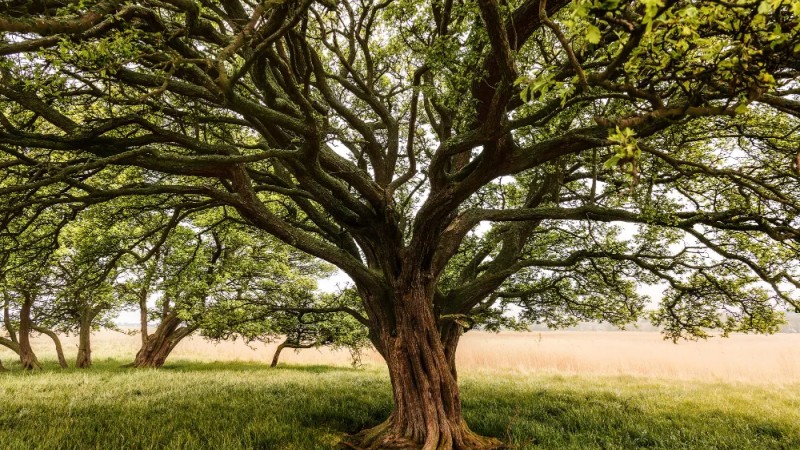The Infinite Branches of Our Ancestral Tree: Tracing Our Roots Back Through Time

“The distinction between past, present, and future is only a stubbornly persistent illusion.”
— Albert Einstein
What if I told you that your family tree branches out to infinity? That every person alive today is the result of a complex web of ancestry stretching back through countless generations? This profound realization not only connects us to our immediate relatives but intertwines our existence with the entirety of human history — and beyond.
The Exponential Growth of Ancestry
Let’s start with something simple yet astonishing. Each of us has two biological parents. Those parents each had two parents of their own, giving us four grandparents. Continuing this pattern, we have eight great-grandparents, sixteen great-great-grandparents, and so on. With each generation we step back, the number of our direct ancestors doubles, leading to exponential growth.
To put this into perspective:
- 10 generations back (approximately 250 years ago), you would have 1,024 direct ancestors.
- 20 generations back (about 500 years ago), that number skyrockets to over 1 million ancestors.
- 30 generations back (roughly 750 years ago), we’re looking at over 1 billion ancestors.
By these calculations, the numbers quickly surpass the total global population of those historical periods. This paradox highlights that our family trees are not isolated structures expanding endlessly but are interconnected webs where ancestral lines converge.
The Paradox of Infinite Ancestors
Here’s where things get intriguing — and a bit paradoxical. If we continue this exponential growth, tracing our lineage back approximately 40 generations (about 1,000 years), the calculated number of ancestors would exceed the total number of humans who have ever lived. This suggests an impossibility: we cannot have more ancestors than the entire human population of the past.
So, what’s happening here?
The answer lies in the interconnectedness of human ancestry. Our family trees overlap significantly due to common ancestors appearing multiple times in our lineage. This phenomenon is known as pedigree collapse, where distant relatives share common ancestors, causing the same individuals to appear repeatedly in our family trees. Instead of a vast, ever-expanding tree, our ancestry is more like a complex web with numerous interconnections.
Challenging Traditional Beliefs
This interconnected web of ancestry poses interesting questions when viewed through the lens of traditional beliefs, such as the idea that all humans descended from just two individuals — like the biblical Adam and Eve.
If humanity began with only two people, the initial generations would have required close relatives to reproduce, leading to a very limited genetic pool. Over time, this lack of genetic diversity would make our species vulnerable to diseases and genetic disorders.
Scientific evidence, however, paints a different picture:
- Genetic Diversity: Modern humans exhibit a wide range of genetic diversity that suggests descent from a larger ancestral population, not just two individuals.
- Population Genetics: Studies indicate that the smallest bottleneck in human history still consisted of several thousand individuals, ensuring enough genetic variation for the species to thrive.
This broader genetic base allowed for greater diversity and adaptability, contributing to the survival and spread of Homo sapiens across the globe.
The Broader Evolutionary Perspective
Understanding our ancestry requires us to look beyond just human lineage. Evolution shows us that we are part of a much larger ancestral network, connected not just to each other but to every living creature on Earth. The tree of life illustrates how all species are related through common ancestry, tracing back to the earliest forms of life billions of years ago.
This means:
- Our family tree isn’t solely about human ancestors; it’s part of an immense tapestry of life that includes all organisms.
- Recognizing this connection broadens our perspective, highlighting the unity and continuity of life on Earth.
- We share common genetic threads with not only primates but with all forms of life, emphasizing our place in the natural world.
The Implications for Us Today
So, what does this mean for us in the present?
- Interconnectedness: It reminds us that our roots go deeper than we might have imagined. We are connected, not just by shared beliefs, cultures, or nationalities, but by the very fabric of life itself.
- Unity: This interconnectedness fosters a sense of unity and shared destiny among all humans. It encourages us to view others not as strangers but as distant relatives, sharing common ancestors somewhere in the vast expanse of our family trees.
- Responsibility: Understanding our shared heritage underscores our responsibility to each other and to the planet we all inhabit.
Reflecting on Our Shared History
Our family trees don’t just tell the story of our individual pasts; they connect us to the entire history of life on Earth. Every leaf on the tree represents a life lived, and every branch signifies a lineage that has endured through time.
By exploring our ancestry, we gain insights into:
- Who We Are: Understanding our genetic makeup and heritage.
- Our Place in History: Recognizing the contributions and sacrifices of those who came before us.
- The Continuity of Life: Appreciating the unbroken chain of life that links us to the dawn of existence.
Conclusion
The infinite branches of our ancestral tree invite us to explore the mysteries of our origins and embrace the interconnectedness of all life. They challenge us to reconsider our place in the world, not as isolated individuals but as part of a grand, continuous lineage that transcends time and space.


Leave a comment